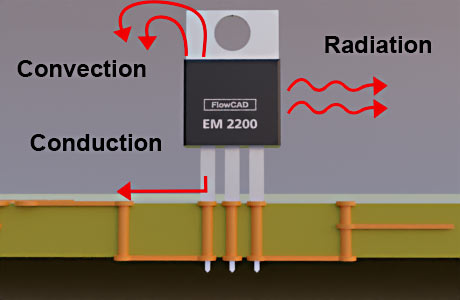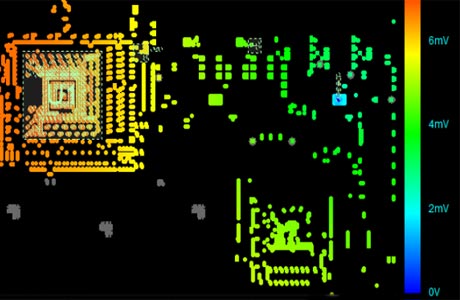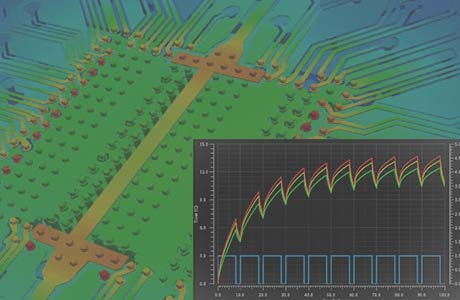Solving Thermal Problems of Electronic Assemblies

Higher packing densities due to ongoing miniaturization of electronic assemblies lead to heat loss of an electrical circuit which can no longer be dissipated so well. This leads to increased circuit temperatures, which in turn affect the electrical behavior of the used components or the entire electronic assembly. If the component behaves differently with the increased ambient temperature, further local heating can occur, so these effects become complex and the temperature adjusts over time.
Thermal behavior depends on several influences such as the ambient temperature, cooling by convection or additional active cooling and the heat generated by the circuit itself during operation. If a complete simulation of the assembly in operation with all the influences becomes too complex, the simulation can be divided into individual areas. FlowCAD offers different solutions for:
- Heating of semiconductors during operation
- Heating of the circuit board due to high currents
- Cooling concepts for assemblies, possibly with housing
Simulations are possible at different times in the CAD flow. With a rough floor plan, the cooling concept can already be designed with the main components from the parts list. The behavior of individual components can already be viewed on the basis of the circuit diagram and helps with the dimensioning of the components. Temperature changes due to voltage drops on the PCB (IR drop) can be detected and reduced during the layout phase. With the production data, the thermal cooling concept can be verified with different 3D analysis methods (e.g. FEM, Finite Element Method or CFD, Computational Fluid Dynamics).
Each tool is good for one aspect of finding a way to reduce the temperature. The right tool, used at the right time in the design process, brings the desired results early on and avoids unnecessary iterations.









